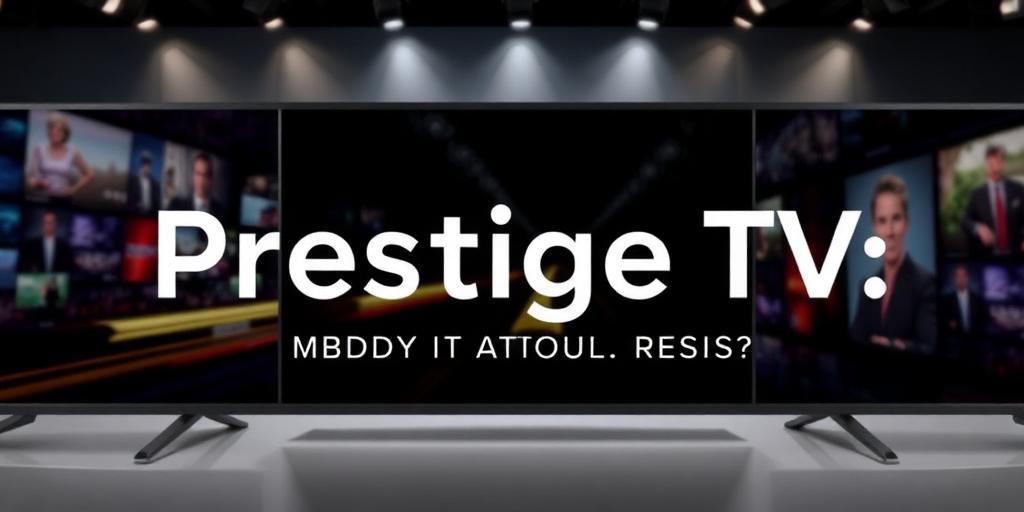In contemporary media discourse, the term "Prestige TV" is frequently invoked, yet its precise definition remains surprisingly elusive. Often used to categorize series that transcend conventional entertainment, it implies a level of artistic ambition and cultural significance rarely associated with the medium's earlier iterations. But what constitutes prestige beyond a substantial budget or a familiar face? This analysis aims to rigorously define "Prestige TV," exploring its core characteristics, historical evolution, and enduring impact on the television landscape.
Deconstructing the "Prestige TV" Phenomenon
The concept of "Prestige TV" did not emerge overnight; it is the culmination of decades of evolving production values, narrative sophistication, and shifting audience expectations. Initially, the moniker often attached itself to shows from premium cable networks like HBO, which pioneered a cinematic approach to serialized storytelling. These productions, such as The Sopranos or * The Wire, redefined what television could achieve, moving beyond episodic self-containment to embrace complex, long-form narratives.
At its heart, defining prestige television involves acknowledging a deliberate departure from the episodic, often formulaic structures that dominated broadcast television for decades. It signifies a commitment to character development, thematic depth, and visual artistry typically reserved for feature films. The goal is not merely to entertain but to provoke, challenge, and reflect the complexities of the human condition.
Key Characteristics of Prestige Television
Several distinct characteristics of prestige TV collectively distinguish it from standard programming:
-
Narrative Complexity and Depth: These series often feature intricate, serialized plots that unfold over multiple seasons, demanding sustained viewer engagement. Morally ambiguous characters, grey areas, and a rejection of simplistic good-versus-evil paradigms are common, fostering a more nuanced exploration of human nature.
-
High Production Values: "Prestige TV" consistently demonstrates a cinematic aesthetic. This includes meticulous cinematography, sophisticated sound design, elaborate set pieces, authentic costumes, and location shooting that rivals feature films. The investment in visual and auditory quality is paramount.
-
A-List Talent and Creative Vision: The involvement of acclaimed film actors, award-winning directors, and visionary showrunners is a hallmark. These creators are often granted significant creative autonomy, allowing them to pursue unique artistic visions without the commercial pressures often associated with network television.
-
Critical Acclaim and Awards Recognition: Consistent praise from critics and a strong presence in major awards ceremonies (Emmys, Golden Globes) are key indicators. This external validation reinforces the perception of artistic merit and cultural importance.
-
Cultural Conversation and Impact: Prestige series frequently generate significant cultural discussion, becoming topics of intellectual debate, academic study, and widespread media commentary. They often tackle challenging social, political, or philosophical themes, contributing to broader societal discourse.
-
Long-Form Storytelling: The format allows for deep dives into character psyches and extended narrative arcs, providing a richer, more immersive viewing experience than traditional episodic television. This differentiates it from shows with a simple monster-of-the-week format.
The Evolution and Impact of Prestige Drama
The evolution of prestige drama can be traced from its early roots in the 1980s with shows like Hill Street Blues and St. Elsewhere, through the groundbreaking era of HBO in the late 1990s and early 2000s, to the current landscape dominated by streaming services. The impact of prestige TV on streaming is undeniable; platforms like Netflix, Amazon Prime Video, and Apple TV+ have invested billions in high-end original content to attract and retain subscribers, further democratizing access to complex, high-quality programming.
However, this proliferation has also led to a degree of oversaturation. While more shows now meet some of the criteria, the sheer volume can dilute the singular impact once reserved for a select few. The challenge for contemporary "Prestige TV" is to maintain its artistic integrity and distinctive voice amidst a crowded field.
Conclusion: A Standard for Excellence
Ultimately, "Prestige TV" is more than a marketing label; it represents a benchmark for artistic excellence and narrative innovation in television. It signifies a production that aims to elevate the medium, engage audiences on an intellectual and emotional level, and leave a lasting cultural footprint. By understanding its fundamental characteristics—narrative complexity, high production values, elite talent, and critical validation—we can better appreciate its role in shaping modern entertainment and continue to value the shows that genuinely strive for this elevated standard.









